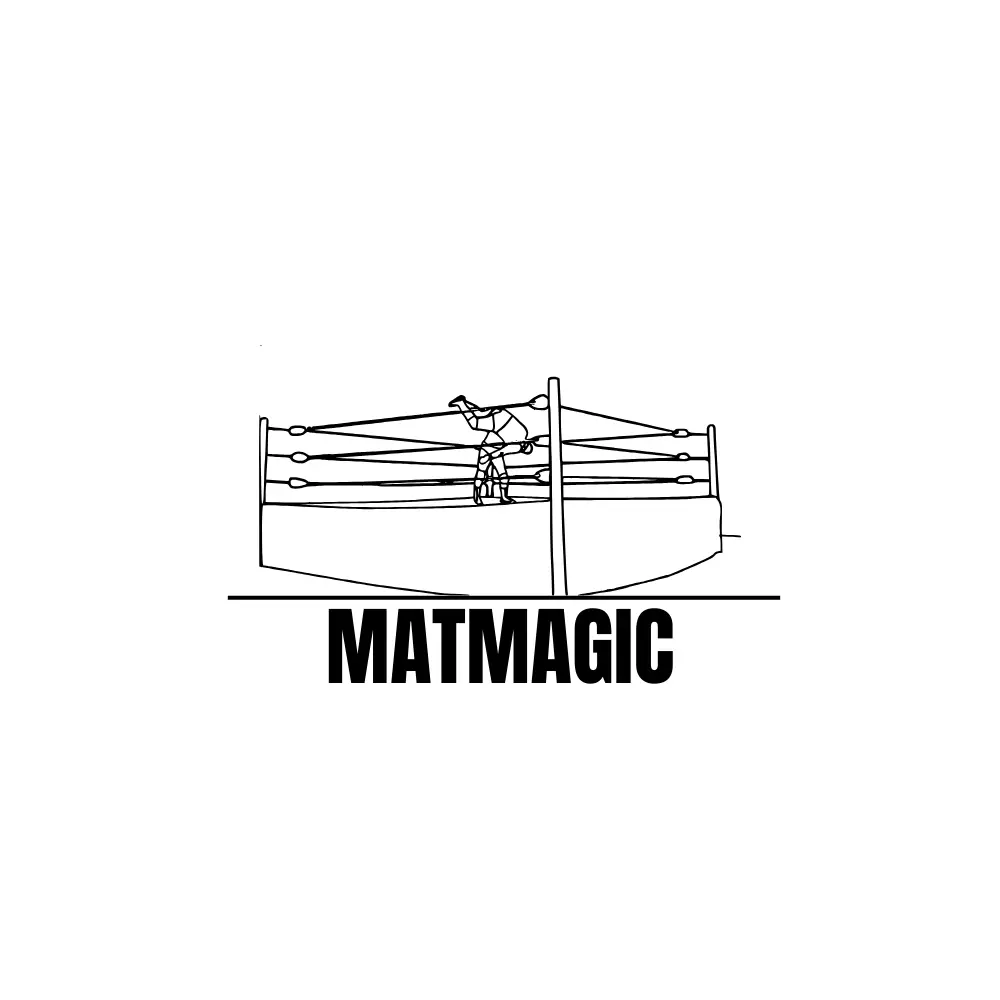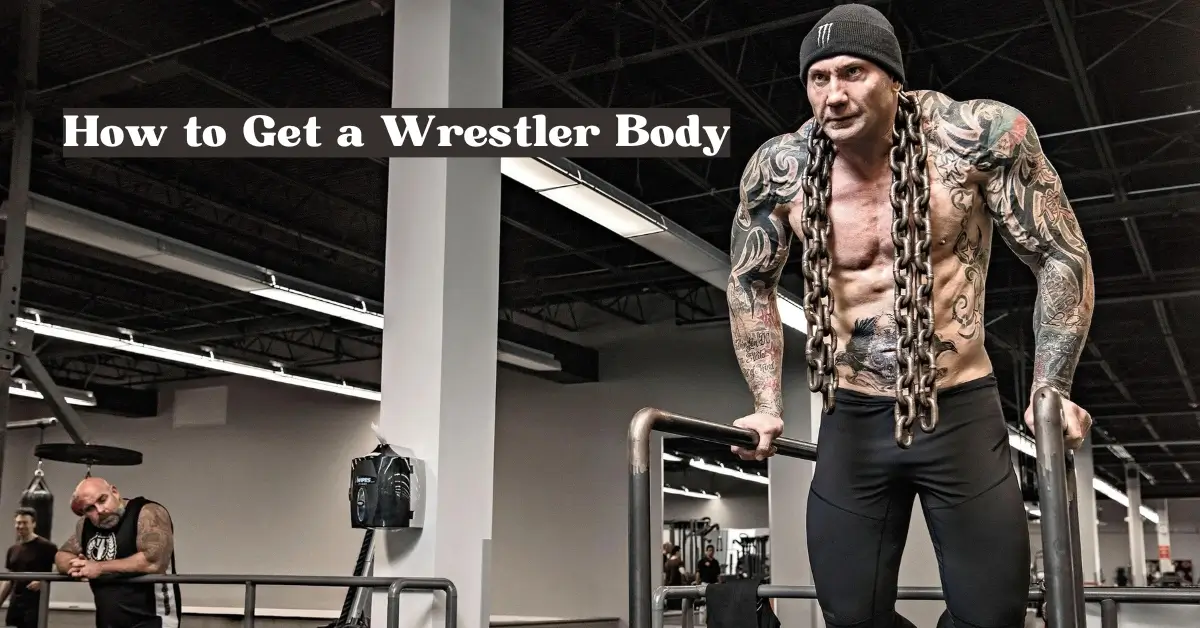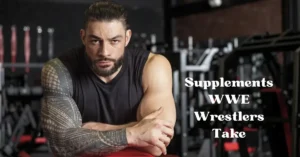Have you ever thought about how to achieve a wrestler’s physique?
Attaining the build of a pro wrestler goes beyond merely appearing fit; it necessitates a strict regimen emphasizing strength, stamina, and dietary habits. While this may seem challenging, following proper advice can help you progress toward the muscular wrestler physique you look up to.
Understanding the Wrestler Physique
If you want to know How to Get a Wrestler Body, understanding the physical attributes that define it is crucial.
Key Attributes of a Wrestler’s Body
Wrestlers exhibit a unique set of physical attributes. They often have:
- Large, powerful upper bodies: The development of chest, shoulders, and arms is particularly important for grappling and controlling opponents.
- Strong legs and core: To provide a stable base for takedowns and throws as well as to resist opponents’ moves.
- Optimal body fat: While many athletes aim for leanness, wrestlers might maintain a higher body fat percentage for added power and leverage. This is especially relevant in certain weight classes or wrestling styles.

Comparing Body Types
Wrestling welcomes various body types, each with its advantages. For comparison:
- Swimmers and soccer players tend to be leaner, with a lower body fat percentage needed for endurance and speed.
- A wrestler’s physique can afford to be more robust, prioritizing muscular strength and bulk that is often not as critical in sports like swimming or soccer.
Strength and Resistance Training
If you’re pursuing the goal of understanding how to get a wrestler body, you must prioritize strength and resistance training.
Creating a Workout Routine
To kickstart your journey in strength and resistance training, it’s essential to develop a structured workout routine tailored to the specific needs of wrestling.
- Train four to six days a week, alternating between muscle groups.
- Include adequate rest days to allow for recovery.
Here are some steps to construct a balanced routine:
- Determine the muscle groups you will focus on for each session.
- Balance your workouts between upper body, lower body, and core exercises.
- Integrate active recovery days with lighter exercises or stretching.
Essential Exercises for Wrestlers
For any wrestler, certain exercises are fundamental in building the physical capabilities required for success on the mat.
- Squats and Deadlifts for leg and lower back strength.
- Bench Press and Pull-Ups for upper body power.
- Lunges and Farmer’s Walks for functional strength and stability.
- Integrate Core Exercises like planks and Russian twists for core stability.
- Practice Thick Implement Training to develop grip strength.

Remember, the consistency and variation in your workouts will determine the growth in your strength and how well you can maintain the muscular physique of a wrestler.
Incorporating Cardiovascular Workouts
To build a physique synonymous with that of a wrestler’s, a tailored cardiovascular regimen is essential.
Types of Cardio for How to Get a Wrestler Body
There are various cardiovascular workouts that are beneficial for those aiming to get a wrestler’s body. These workouts can range from aerobic to anaerobic exercises. For aerobic conditioning, consider incorporating:
- 20-30 minutes of running or cycling for cardiovascular endurance
- 5-10 minutes of jumping rope to enhance footwork and agility
For anaerobic conditioning, which is vital for high-intensity bursts, common workouts include:
- Sprint intervals for increased power and speed
- High-intensity interval training (HIIT) for a balance of strength and cardio

Balancing Cardio with Strength Training
To achieve that sought-after wrestler’s physique, it’s crucial to balance your cardio with strength training. Wrestlers need to integrate both, ensuring that they aren’t compromising muscle mass while working on their endurance. Strategies for balancing include:
- Planning workouts on alternating days to give each muscle group sufficient recovery time
- Incorporating compound movements like deadlifts, squats, and bench presses that build strength and also challenge the cardiovascular system.
Rest and Recovery Strategies
How to Get a Wrestler Body is as much about giving your body the rest it needs as it is about the training itself.
Importance of Sleep
Sleep is not merely downtime; it’s a vital component of muscle repair and growth. Achieving a wrestler’s body requires ample sleep—think of it as a nightly session for your body to rebuild and get stronger. Strive for at least 8 hours of quality sleep per night to ensure adequate release of growth-promoting hormones like testosterone.
Active Recovery and Rest Days
Incorporating active recovery and scheduled rest days into your regime is a must for maintaining the intensity of your workouts. Active recovery can include low-impact activities like swimming or yoga, which help in increasing blood flow and reducing muscle soreness.
Meanwhile, rest days are there to prevent overtraining, allowing your muscles to repair and strengthen. Aim to schedule regular rest days as part of your training routine to balance the hard work with necessary downtime.
Nutrition for Building Muscle

If you’re keen on learning how to get a wrestler body, you’ll need to focus on your diet as much as your training. Nutrition is crucial for muscle development.
Macronutrient Requirements
Macronutrients are the foundation of your diet: proteins, carbohydrates, and fats are all critical for building muscle.
- Proteins: Aim for about 1 gram per pound of body weight daily. For muscle repair and growth, high-quality sources such as lean meats, dairy, and legumes are excellent.
- Carbohydrates: Your main energy source, which is vital for strenuous workouts. Prefer complex carbohydrates like whole grains, vegetables, and fruits.
- Fats: Essential for hormone production, including those responsible for muscle growth. Focus on healthy fats found in nuts, seeds, and fish.
Meal Planning and Timing
Planning your meals ensures you fuel your body consistently throughout the day for maximized muscle growth.
- Pre-Workout: Consume a mix of protein and carbs 1-2 hours before training to fuel your muscles.
- Post-Workout: Within 30 minutes after exercising, have a protein-rich meal to kickstart recovery.
With proper planning, you won’t be at risk of missing out on vital nutrients at crucial times.
Supplements for Muscle Gain
While real food should always be your priority, certain supplements wwe superstars take to support muscle building.
- Protein Powders: Convenient for meeting your daily protein needs, especially post-workout.
- Creatine: Proven to increase strength and power output during intense training.
- Beta-Alanine: May help reduce fatigue and increase training volume.
Supplements are adjuncts to an already solid diet plan. Remember, they’re not a replacement for whole food but can give you an edge in your muscle-building efforts.
FAQ
How are wrestlers so muscular?
Emphasizing compound exercises like squats, deadlifts, bench presses, and pull-ups aids in overall strength development
How do you bulk like a wrestler?
eating many calories per day, and you want the majority of those to go to muscle! So you put in hours in the gym
How do WWE wrestlers get in shape?
Running, sprinting, and HIIT sessions help them maintain peak performance during long matches.
I hope you liked this Post about How to Get a Wrestler Body
Let us know what you think about it in the comments.







